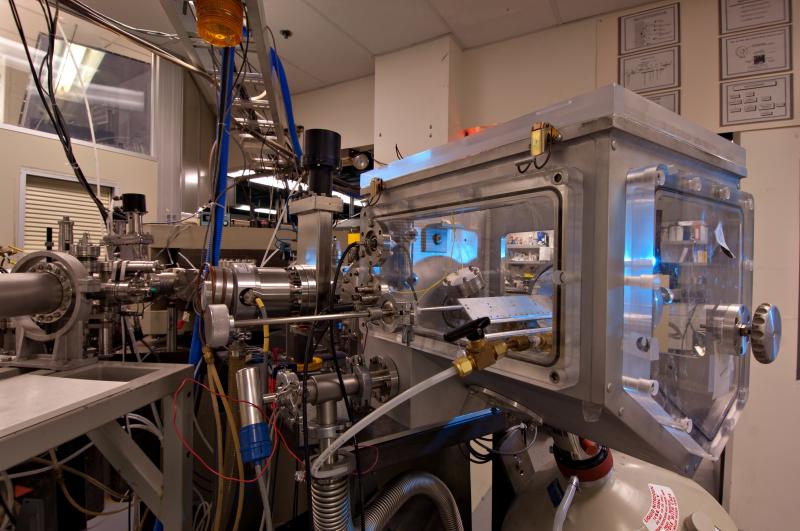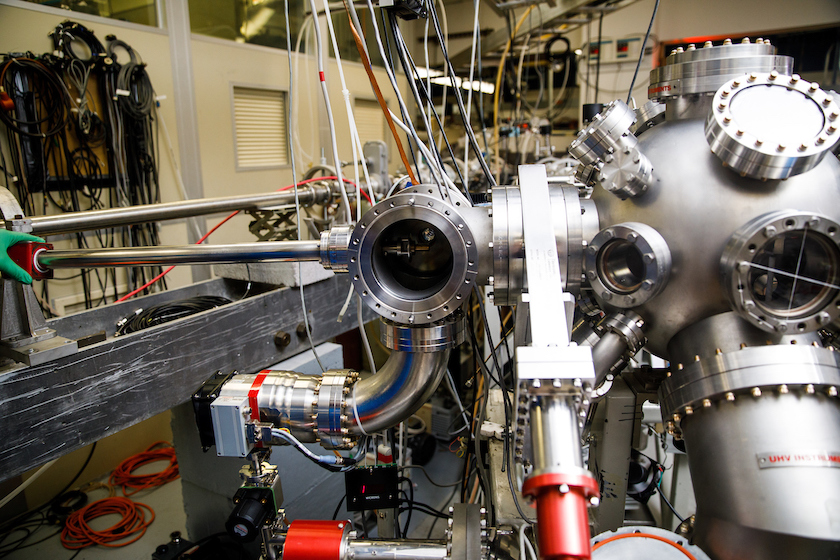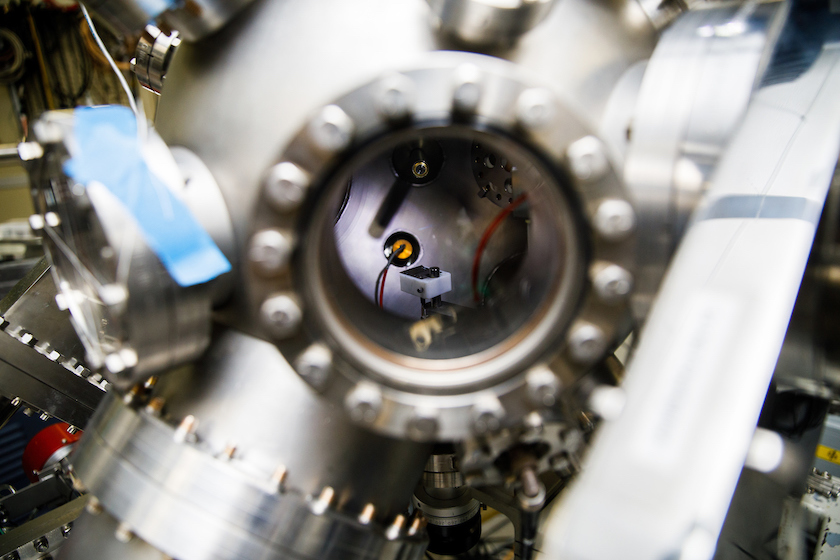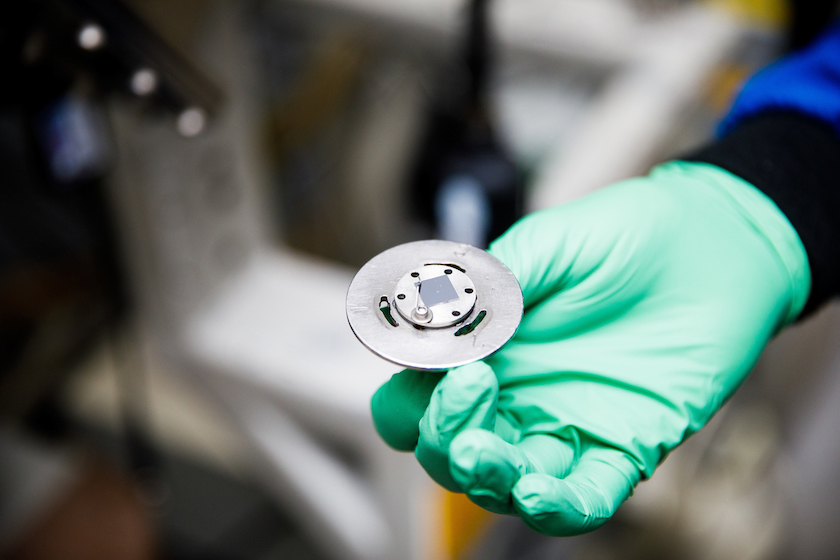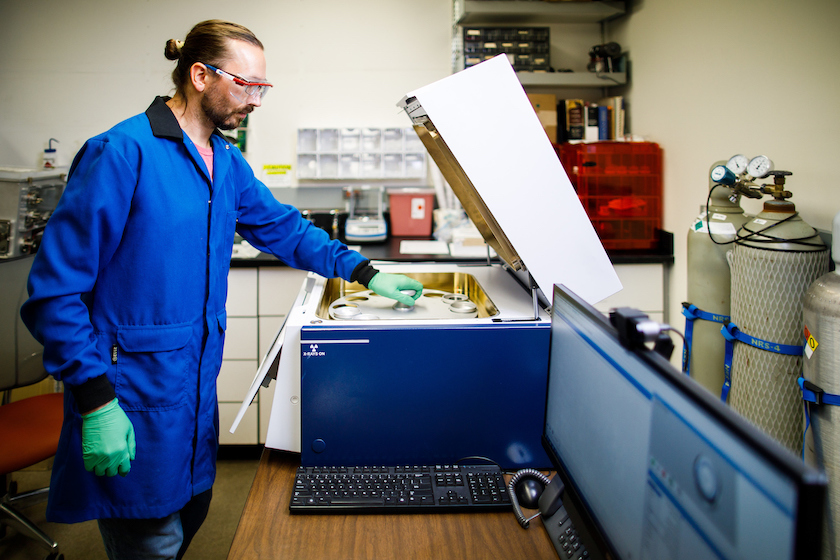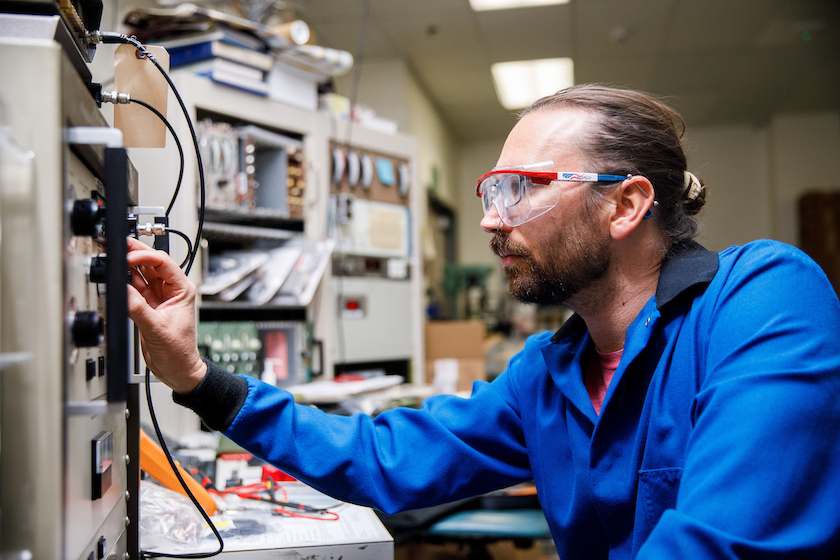What is Ion beam analysis (IBA)?
Ion beam analysis uses an ion beam accelerator with MeV ion beams for compositional and structural characterization of materials. It combines the advantages of non-destructive and standardless analysis of the surface and near-surface regions (0-2 microns) of solids. IBA is most advantageously applied to analysis problems where elemental composition and depth or thickness information are needed.
Rutherford backscattering (RBS)?
RBS is a surface analysis using recoil energies of accelerated ions (e.g., He or H) to determine the species and depth profiles of atoms in a given sample. Extremely useful when quantitative results are required in the absence of standards.
What is Ion channeling?
Ion Channeling is the measurement of the ion beam backscattered yield of a single crystal aligned with one of its major symmetry axes is parallel to the incident MeV ion beam. The backscattered yield is reduced in proportion to the crystalline quality of the sample. The technique can also be sued to determine the lattice locations of impurities or dopants (substitutional vs. interstitial lattice sites).
What is Proton Induced X-ray Emission (PIXE)?
PIXE is a technique similar to X-ray fluorescence and can provide elemental composition of materials. It has a higher signal/noise ratio when compared to electron-induced X-rays (EDS in an SEM). PIXE is sensitive to impurities in the ppm range and requires no sample preparation.
What is elastic recoil detection (ERD)?
ERD allows hydrogen content analysis. H atoms are scattered from the sample (by the incident accelerated ions) and energy analyzed for concentration and depth distribution.
All of the above processes are virtually nondestructive to the sample. It is important to note that these techniques yield elemental composition, independent of the type of chemical bonding present.
IBeAM Lab
The IBeAM lab consists of a 1.7 MeV tandem accelerator with a beamline and analysis chamber. The Tandetron accelerator is a Cockroft-Walton, gas-insulated high-frequency device which can use either a gas source for ions (H, He, N, O, etc.) or a sputter source for heavy ions (MeV implantation). Ion energies of several MeV can be created since the tandem accelerator operates by producing negative ions at ground potential and then uses a gas stripper at the high voltage terminal, thereby creating multiple charged states of positive ions which are accelerated to ground and selected by the bending magnet on the beamline where the sample chamber is located.
IBA measurements are done in a high vacuum environment requiring samples to be clean and vacuum compatible. The ion beam is typically 1-2 sq. mm in area. An additional beamline allows the ion beam to pass from the vacuum through a polymer window into the room atmosphere. Samples placed at the beamline exit window can be X-ray analyzed in air. This allows chemical composition analysis of samples which are large or liquid or in some way not vacuum compatible. A variety of materials ranging from objects of art and archeological specimens to environmental (air and water samples) and geological (meteorites and rocks) samples can be analyzed.
IBeAM User Qualification Process
The ASU 1.7 MV Tandetron Ion Accelerator in its entirety is a complex machine involving a large number of electrical and mechanical components as well as vacuum systems interacting to produce MeV ion beams for materials analysis and modification. User qualification and training are, therefore conducted in stages to allow as much user-friendliness and simplicity as possible. To become a qualified user the following procedure should be followed.
- Read the IBeAM Users Manual through section III and become familiar with the concepts of the ion beam analysis technique you want to use (e.g. RBS, PIXE, ERD etc.). Find a useful tutorial here. Also books and literature are recommended at the back of the IBeAM Users Manual.
- Submit a training request in the GMSF core ilab.
- Come to your session with a real sample(s) so that you may gain the added value of useful data as well as accelerator training. The sessions consist of learning the basic components (and functions) of the accelerator, beam line and end chamber. Level I Users will become competent in successfully loading (and unloading) samples as well as data acquisition, saving and fitting procedures.
- After two or three sessions of working with the instructor, the new IBeAM User will be able to schedule beam time and work independently (with the instrument manager or a veteran user in close proximity to assist with problems or questions). As usage level warrants the user may be trained to adjust beam parameters (e.g. beam energy) and shut down machine (User Level II) and possibly to User Level III where all features of accelerator operation (including source start up) are addressed.
Contact
Mark Mangus
Research Specialist
mwmangus@asu.edu
480.965.6327
Xin Guo
Research Lab Manager
xguo95@asu.edu
602-543-5986
- Ion beam analysis of materials
- Fileibeam_user_manual.pdf3.92 MB


